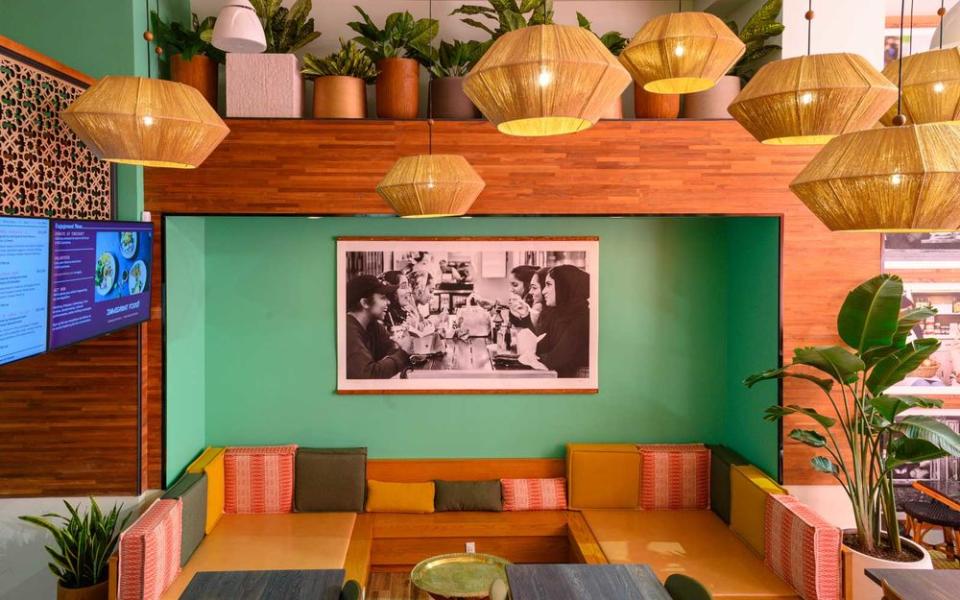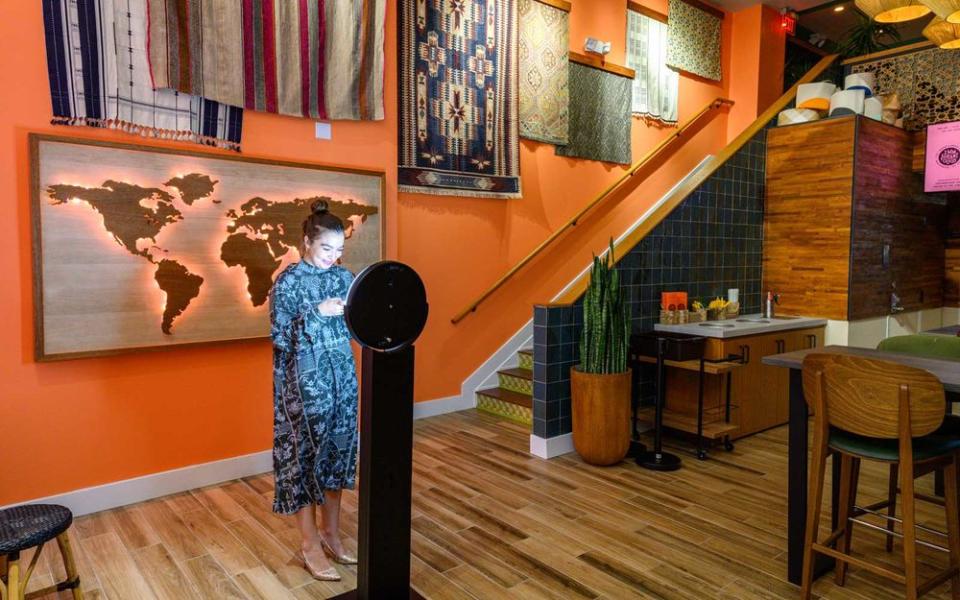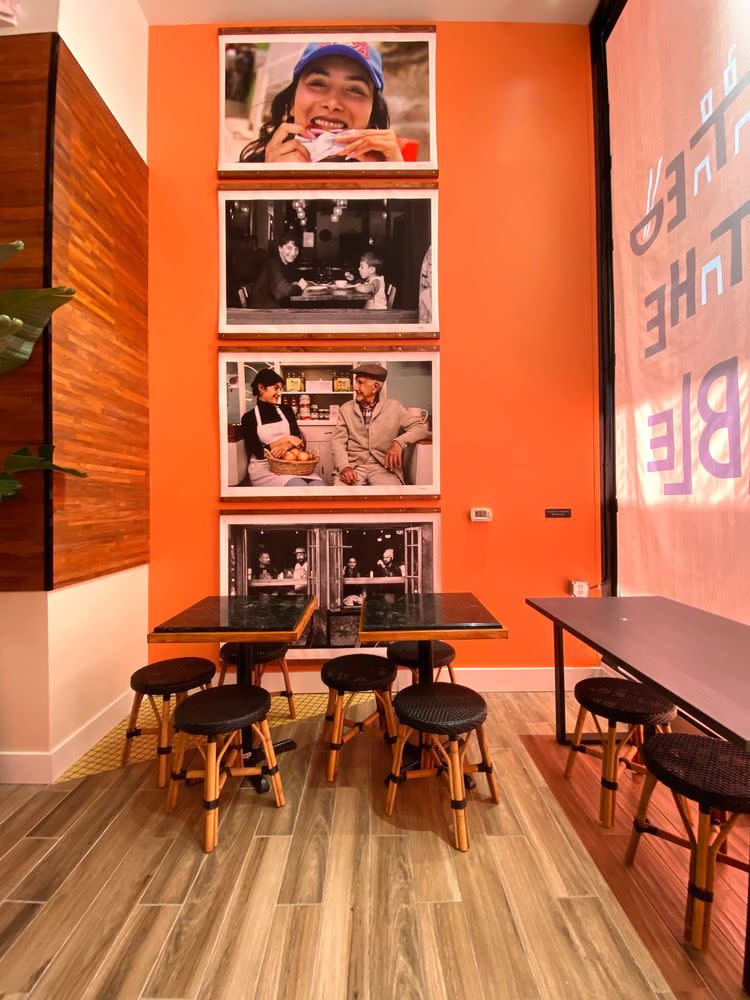A Restaurant Dedicated Entirely to Immigrant Food Just Opened Across From the White House
If you oppose our country’s current immigration policy and want to take a stand, Immigrant Food, a new fast-casual restaurant opening on Nov. 12 across from the White House, is here to help. Its aim is three-fold: to serve unique green-and-grain bowls, advocate for pro-immigrant organizations, and get you involved.
Come for the food, first. The bowls, which are designed by Venezuelan-born chef Enrique Limardo, of D.C.’s Latin fine-dining restaurant Seven Reasons, combine ingredients from two or more cuisines — each nods to countries whose citizens have immigrated to the United States en masse. (Think: the Mumbai Mariachi bowl, which is inspired by immigrants from Mexico, India, and Greece and includes spice-rubbed steak, quinoa, roasted potatoes, corn, feta, jalapeño, mango chutney, and smokey mango chipotle sauce.)
But there’s more: the restaurant partners with five local pro-immigrant nonprofits by donating its space and helping guests volunteer. Its design, from architect Michelle Bove, who designed Maydan, features touches like a wood-carved world map and photo booth, while artwork from Colombian-born photographer Luis German Gómez adorns the walls.

We delved into the restaurant’s various layers with chef Enrique Limardo, Bove, and co-owner Peter Schecter, a former political consultant who also served on the board of José Andres' D.C.-based restaurants for nearly 15 years.
Immigrant Food’s founding team is made up entirely of first- and second-generation immigrants. Peter, how did your personal experiences inspire the restaurant?
Peter Schecter: My father was an immigrant from Austria and my mom was from [a Jewish family in] Hamburg, Germany. In 1936, when she was 16 years old, Hitler was already in power, and many German Jews were trying to get out. My great-aunt had married a prominent American and moved to New York, so she was able to get my mother and her family a visa to come to the United States. So, both my parents are immigrants, but my mom was a chain migrant. Often, what you hear a lot these days is that chain migration is something that we need to get rid of, and that certainly touches me very personally.
My mother died 10 years ago and my father died 20 years ago; none of [the anti-immigrant sentiment] we are feeling today really was happening when they were alive. I’ve always lived with the idea of how immigrants have really made America what it is today — they’ve made America great again and again. As a lot of the nastiness started happening around immigrants, I felt strongly that there had to be a way to talk about how important immigration has been for this country.

How did you first connect with chef Enrique Limardo?
PS: As a political consultant, I worked on a campaign in Venezuela for the presidential candidate Henrique Capriles. Capriles’ campaign manager, Armando Briquet, is a close friend of Enrique’s. Armando reached out to me saying that there was this very cool Venezuelan chef who’s opening a restaurant in Washington, D.C., and they’re looking for investors. He knew that I had invested in other restaurants — in José Andrés’ ThinkFoodGroup — and so I met Enrique through Armando. I loved what they were doing at Seven Reasons.
When I was thinking about the idea for Immigrant Food, Enrique and I talked to each other. I really just fell in love with him and the way he does things and, most importantly, the incredible ability he has in the kitchen.
Enrique Limardo: When Peter came to me with this idea about Immigrant Food, I just fell in love with it. It represents something that I am. That’s why we started this project.
Why do you think a fast-casual restaurant is the best way to advocate for this issue?
PS: Part of the idea was not to cater only to those with ample budgets and, instead, cater to younger people who are living through a moment that I didn’t live through in America when I was younger.
We wanted to create a place that celebrates immigrants, and we also wanted to be able to scale that model. If we have two locations, we’ll be able to provide more space, more dollars, and more volunteers to our five immigrant organization partners in the D.C. area.
Do you plan to donate a portion of your proceeds to the organizations directly and what do these partnerships entail?
PS: We may donate a portion of our proceeds to our partners in the future, but that’s not currently in the business plan. Rather, we’re making a portion of the restaurant (a section of the second floor) available for our partners to reserve and use for free. For example, if one organization wants to reserve it for workshops, citizenship classes, English classes, or do legal intake interviews for possible cases, that option is always available to them.
And so, on one hand, we’re offering our space to our partners, but the other is increasing their visibility. In the restaurant, right next to our food menu, there’s a digital “engagement menu” that lists different ways that customers can engage with our partners, whether that’s donating their money or their time via volunteering opportunities. Our partners need translators, PR people, people with a legal background who can do intake interviews, bookkeepers. This menu will be updated weekly.
As a customer, any time you walk into the restaurant and express interest in getting involved, there will always be someone on-site to answer questions and help you do so.

Each Immigrant Food bowl fuses several different cuisines. Why?
PS: We asked ourselves, should we try to do an authentic Ethiopian bowl, an authentic Italian bowl, and [move forward that way]? But if you know Enrique, you know his natural tendency is to bring in the most unusual, the most special, the most non-traditional combinations possible.
Enrique, you’ve worked in restaurants around the world for more than 25 years. How did you draw on these experiences to design Immigrant Food’s menu?
EL: It was a long, creative process. My team and I conducted a lot of experimentation with countless ingredient combinations, lots of trial and error. My inspiration comes from the “memory palette” of all my travels — the many different chefs I've worked with from around the world. My background reading has been general, online, and in local cookbooks, as well as talking to chefs from the gastronomies I've included in the menu.
Immigrant Food’s first location is across from the White House. Why did you pick this location and what is its significance to you?
PS: We picked this location for a bunch of reasons. It’s in the middle of downtown, so the density of the lunchtime population is huge. It’s a really beautiful space with high ceilings and two levels. But we also picked it because being in downtown Washington D.C., near the White House, is like a megaphone. It’s a loudspeaker. We want to use it to highlight what we see as the fundamental value of immigration: that immigrants have brought energy, cultural diversity, a sense of entrepreneurship, and an amazing amalgam of innovation [to the United States].
In terms of hiring practices, how do you plan to explicitly bring people whose cultures you’re representing into the fold of the restaurant?
PS: We are committed to hiring a diverse group of immigrants… whether they’re people who have been here for a number of years or even sons or daughters of people who are immigrants. But regardless, we want people who are sensitive to the immigrant experience in one way or another. We want a broad array of people who represent America.
What’s the vision for the design of the physical space?
Michelle Bove: We started by talking about what does being an immigrant mean, today? How do we represent all of these different immigrant groups and not create this kind of touristy [vibe] of, ‘Well, clearly, that fabric is from Africa, and clearly that fabric is from China!’ I feel that there are a lot of different textures, an interweaving of cultures within the space.
Finally, how did you decide on the name Immigrant Food?
PS: The name was originally my idea, but I got slightly cold feet at one point in the process, so we ran a couple of focus groups. Immigrant Food didn’t get a lot of votes until someone argued for it. They said it was honest and had emotion, and five people changed their votes just thinking about that.
The name wears its purpose on its sleeve. It’s what we are, and we are proud of that.
This interview has been condensed and edited.

